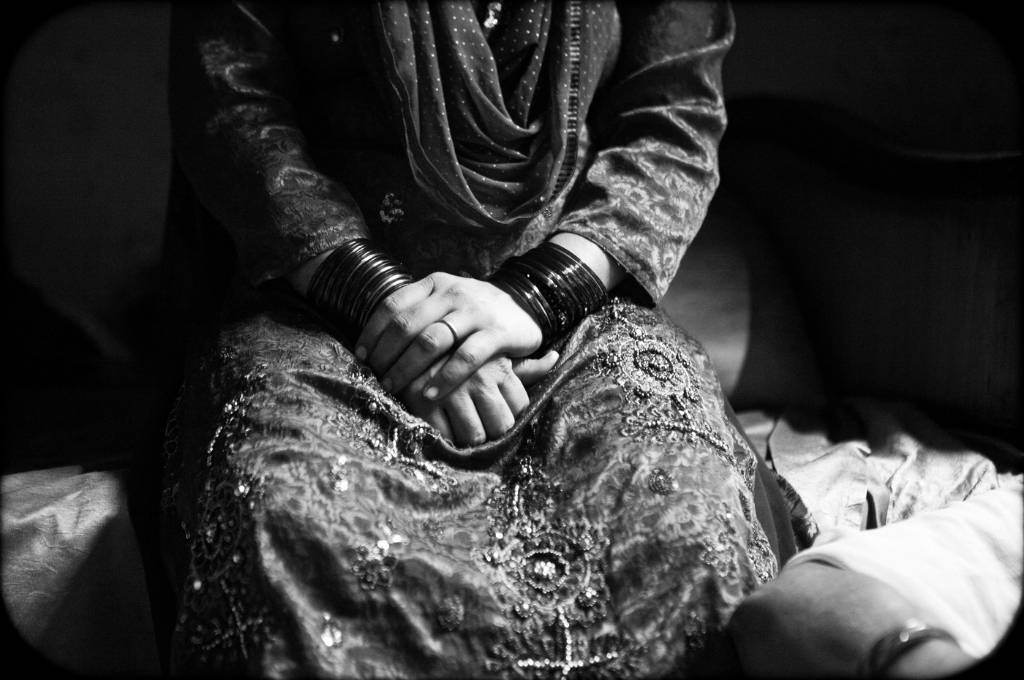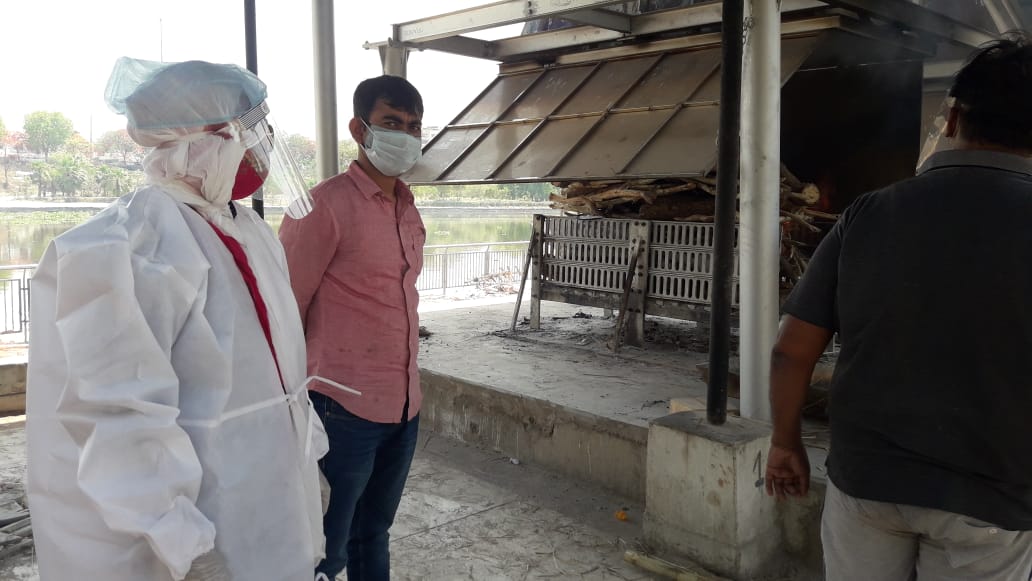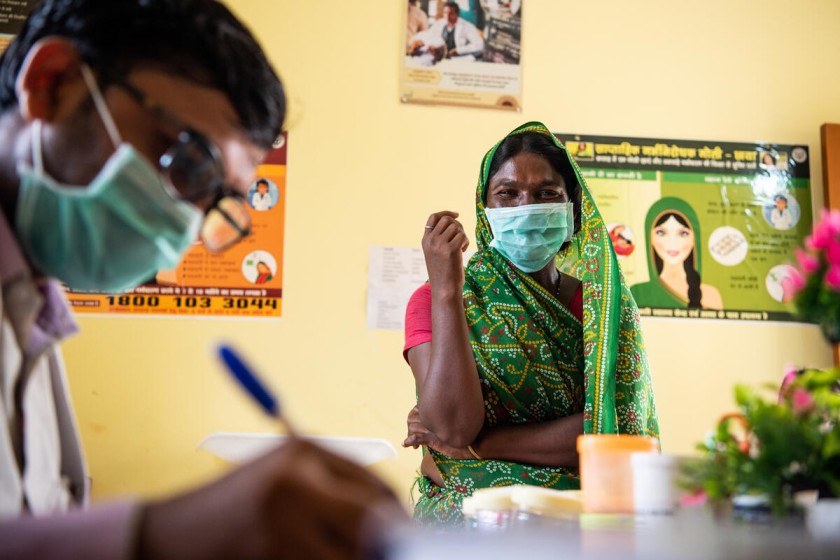During the lockdown, an estimated 20 to 30 million migrant workers returned home, out of work and out of money. Some of them tried helping their families with farming and some even used the skills they had developed to set up new enterprises. But most remained jobless. The National Rural Employment Guarantee Act (NREGA) was set up for conditions like these: To offer employment and a fallback option to those who need it. It is often the sole income source for many rural households, pandemic or not.
The reality of NREGA on the ground
At the start of the lockdown, the government anticipated a loss of jobs and an increase in demand for employment. To this effect, they announced that NREGA works could start by April 20th, 2020. Between April and September, 8.3 million new NREGA job cards were issued, the highest annual increase in seven years. A NREGA tracker from People’s Action of Employment Guarantee (PAEG), a group of activists, academics, and civil society members, shows that 0.2 million households had already completed the 100 days of employment that NREGA guarantees for the entire year, by July.
Between April and September, 8.3 million new NREGA job cards were issued, the highest annual increase in seven years.
However, the tracker also reports that as of August, 17 percent of those who asked for NREGA jobs did not get them. Throughout the lockdown, we, at Mobile Vaani, were flooded with complaints from people needing NREGA work.
Through our platform and community volunteers, we sought to understand the ground realities of NREGA. Some panchayat heads 1, responsible for working with NREGA employees to allocate work, told us that they were doing their best to use available budgets to provide job cards and work to those who demanded it. Some others were candid, off the record, and told us that low funding was affecting their ability to raise work demand on time.
Based on conversations with them and with citizens who reported grievances accessing NREGA work and our work on the ground, here are key challenges that hamper the implementation of NREGA:
Related article: NREGA in the times of COVID-19
Operational issues
The number of people looking to get NREGA job cards increased after the lockdown was imposed. The demand was both from returned migrant workers and local workers who lost their other means of income. Getting a job card made is the first step towards applying for, and receiving, NREGA work. For many like Hadma Khatoun from Ghazipur, Uttar Pradesh, bureaucracy and paperwork are often a barrier to getting this.
Other issues such as misinformation (for example, that one cannot apply for a job card in lockdown, like Hadma thought) and favouritism by panchayat heads have prevented people from getting job cards. For example, Praveen Chauhan, from Ghazipur, previously did carpentry at weddings, and tried to apply for a NREGA job card. He claims that the pradhan only issued them to people he knew. “He just told me that it [the job card] can’t be created,” said Chauhan.
We found that only around 60 percent of workers received the job cards—the other 40 percent were still waiting for them.
Rozgar sewaks are recruited by the Ministry of Rural Development and allocated to panchayats, to work with panchayat heads to help people file applications for job cards and to register their demand for work. They also prepare work plans and allocate work to those who demand it.
Despite the presence of rozgar sewaks, the application process is complex. People faced difficulties ranging from getting the application form, to getting documents organised, and filling up the form, to knowing where to submit it. Given this, we assisted about 200 workers in applying for job cards. We found later that only around 60 percent of them received the job cards—the other 40 percent were still waiting for them. Delays could have been due to protests by rozgar sewaks, or because the sewaks are generally required to assist in other governmental tasks such as with elections. Often, the sewaks are also given the responsibility of more than one panchayat, even though they are only supposed to be responsible for one.
Having a job card does not guarantee work. Many people are actually unaware of how to formally raise a demand for work by filling out the necessary forms at the panchayat office. Of the 400 job cardholders we helped register their demand for work, only 30 percent knew how to use their cards to demand work. One in four people simply ended up asking the mukhiya verbally for work.
Rozgar sewaks are supposed to help job card holders register for work and ensure that they get work within 15 days of registering. They are also required to organise a rozgar diwas (employment day) at the ward-level at least once a month, dedicated to this. But rozgar diwas events weren’t conducted regularly during the lockdown or even post-lockdown. The situation got tougher in August, when hundreds of rozgar sewaks went on strike in Jharkhand.
These experiences lead us to believe that the official unmet NREGA demand rate—as per the PAEG tracker, based on government statistics—is actually an underestimate.
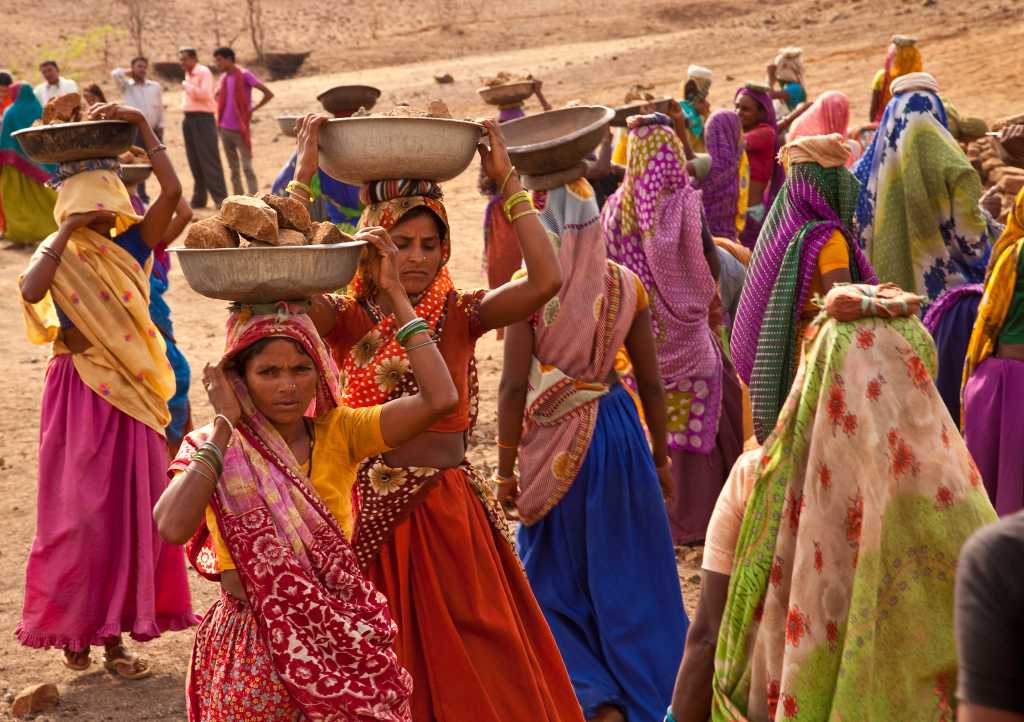
A stronger NREGA, one that provides a range of work, pays respectable wages, on time, to anyone, has the potential to give workers a shot at dignity. | Picture courtesy: Flickr
NREGA promises payment within 15 days of work completion. As of August 3rd, the central government was yet to transfer up to 40 percent of NREGA payments for July to state governments. Although the deficit was lower in previous months, these delays in transfer affect those who urgently need money.
Our community volunteers helped nearly 400 people register their demand for work. Only about 60 percent were sanctioned work. Fifty-six percent of them got payment for their work in 10 days and 22 percent got payment within 10-20 days. However, 22 percent of the respondents did not receive wages even after three weeks of completing their work. For example, Rajkumar, who moved back to Allahabad in lockdown, was not paid for two months. He raised the issue with his pradhan, who kept saying that the payment would, “come in 3-4 days”.
Twenty-two percent of the respondents did not receive wages even after three weeks of completing their work.
Cash transfer related issues that plague other schemes such as PM-KISAN and Jan Dhan are also prevalent in NREGA. For example, Shah Alam from Ghazipur reported that remuneration for his NREGA work went to his deceased father’s bank account, which does not have any nominee listed. As a result, he cannot access it. Other problems, such as Aadhaar cards being linked to the wrong bank account and inactive accounts due to KYC issues are also quite common with NREGA.
Related article: Getting construction workers their entitlements
Corruption within the NREGA system reduces the likelihood of deserving people being able to benefit from it. Often, middlemen add ghost workers to the roster, pocket wages, or keep workers’ job cards or ATM cards with them to withdraw their payments. These middlemen get involved as many workers don’t know about the rozgar sewaks, says Ranjan Kumar, a community volunteer from Gidhaur, Bihar. Another community volunteer narrates the story of a village in Kalyanpur, Bihar, where the mukhiya collects and keeps job cards of panchayat members himself. He then colludes with the local Customer Service Point (CSP, a rural banking services facility) to get people’s fingerprints to withdraw their money, and gets NREGA work done using machines instead of manual labour. A common complaint is about machines being used to get work done—something that is not allowed under the scheme.
Other corruption-related issues are to do with arbitrary works being sanctioned. For example, lakes being renovated and then dug up again or NREGA-funded construction that is left incomplete.
Strategic issues
Schemes like NREGA aren’t just a lifeline, but also have the potential to help workers from feeling forced to migrate for work. The scheme is known to have pushed higher wages for agricultural work in rural areas. However, strategic issues hamper NREGA’s ability to be efficient and available around the year, and offer work for a diversely skilled population.
NREGA is primarily to engage people in unskilled work, although it also offers semi-skilled or skilled jobs, such as masonry, plumbing, or carpentry. However, despite skill mapping by the central government for migrant workers, many end up doing tasks they are overqualified for. Take the case of Shiv Muni, based in Ghazipur, who used to work as a mistri (a skilled construction site supervisor). He made INR 500 a day, but now, with no other work, he has to do manual labour under NREGA. There are simply not enough skilled jobs available.
This is a big deterrent for workers such as Rajendar Kumar Mahto, who returned from Gujarat, and was reluctant to take up NREGA work because it involves manual labour. He left his home in the first place because he could not find jobs that matched his qualification. “I request the government to give us work that is according to our education,” he says.
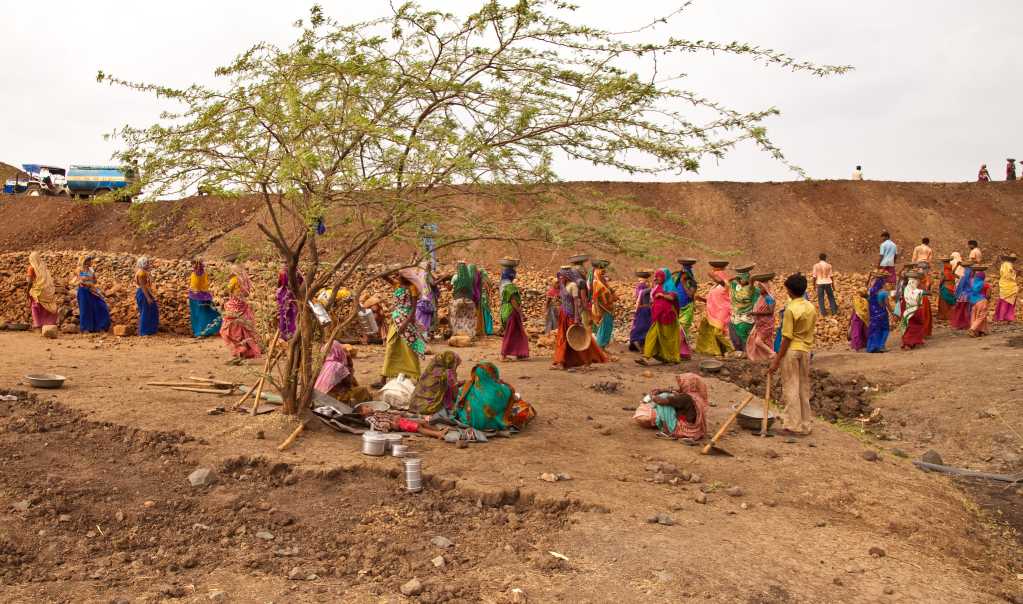
The pandemic has proven why India needs well-functioning, extensive social protection schemes, be it for food, health, or employment. | Picture courtesy: Flickr
The government’s NREGA wage announcement—an increase in the daily wage from INR 182 to INR 202 at a national level—in March was criticised by activists. People called for a further increase in wages, an increase in the number of work days guaranteed, and a change from counting days worked per household to days worked per individual.
Jayprakash Ram from Ghazipur ferries construction debris and got a NREGA job card in 2008. But he has hardly engaged in any NREGA work. He preferred to continue his ferrying work, even during the lockdown, because NREGA wages are too low. Similarly, Lakshman Ram, who used to work in Telengana, earning INR 600 per day, needed the NREGA daily wage to be at least INR 400 in order to sustain his family.
Related article: Looking for a new version of MGNREGA
Currently, NREGA is unable to provide work throughout the year. For example, during the monsoon, all work related to construction or pond digging had to be suspended as it could lead to accidents and deaths.
Work sanctioned under NREGA must be diversified to allow for continuous and safe availability of work throughout the year. This could include campaigns such as Pani Roko, Paudha Ropo, initiated in Hazaribagh, Jharkhand, that provides employment opportunities (planting trees) through NREGA to thousands of migrant workers who have returned.
Neoliberalism in India also explains some of these issues
The pandemic has proven why India needs well-functioning, extensive social protection schemes, be it for food, health, or employment. Schemes such as NREGA aim to do this, but effective implementation is a challenge.
The strongly neoliberal character of India could explain why. Neoliberal states need to ensure that a surplus labour supply is always maintained (so that it can be exploited for low wages), and that workers do not have other fallback options. So, the Indian government actually faces a choice: Whether to provide a life of dignity to its citizens or to bow down to these pressures.
NREGA is not just a lifeline, it can also strengthen workers’ collective bargaining power in the labour market.
Finding the fiscal space for increased welfare spending is not a challenge—direct taxes and wealth taxes can bring in the required capital. Ensuring better implementation of social protection mechanisms is also not an unsurmountable challenge. Intent to do this, aided by the right institutions, can build robust citizen-government interactions. The inability to create enough employment opportunities can also be worked around. The right mix of schemes—such as Mudra (to have skilled workers set up small enterprises) and NREGA (to appoint unskilled workers as apprentices)—as suggested in Jean Dreze’s DUET model, can create new employment across diverse skillsets.
It’s important to remember that NREGA is not just a lifeline, it can also strengthen workers’ collective bargaining power in the labour market. A stronger NREGA, one that provides a range of work, pays respectable wages, on time, to anyone, has the potential to give workers a shot at dignity and make the market less exploitative. The choice is the state’s. Citizens must also demand stronger social protection measures, better working conditions, and a dignified life for everybody.
- Referred to as the sarpanch in Madhya Pradesh, mukhiya in Bihar and Jharkhand, and pradhan in Uttar Pradesh
—
Know more
- Explore Janta Parliament, a rich repository of testimonies across India on development issues, especially with social welfare.
- Go through Gram Vaani’s survey on the post-lockdown working conditions of industrial workers: Moving towards the institutionalisation of inequality and exploitation.
Do more
- Read Amartya Sen’s book, Development as Freedom, for its arguments about how social safety nets enable people to seek new freedoms, and Amartya Sen and Jean Dreze’s An Uncertain Glory: India and Its Contradictions, to understand the underlying principles behind different social policies, and a fiscal comparison of the government’s welfare spending with its revenue foregone in subsidies to the corporate sector.



